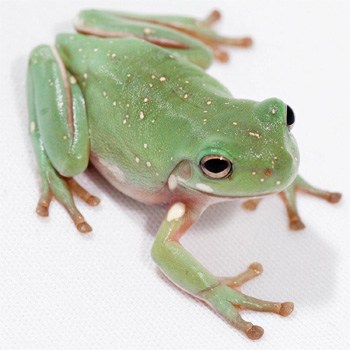Type the name of the breed you're looking for below
[wpdreams_ajaxsearchlite] Don't see the breed your're looking for? Click here and let us know!
White’s Tree Frog
| Place of Origin and Range | This is a species of tree frog native to Australia and New Guinea, with introduced populations in the United States and New Zealand. |
| Description | Their bodies are usually green in shades ranging from bright yellowish-olive to lime green. The colour can change depending on lighting or temperature. Small patches of gold or white may occur on the skin, and they may also have a white, pale yellow, or cream-coloured lines running from their jaws or upper lips to their groins. They have smooth skin and large toe pads. There is a distinctive fatty ridge over the eye and the parotoid gland is moderately large. Their abdomens are pale yellow to white. Males have wrinkled throats (indicating the vocal pouch) and are slightly smaller than females. |
| Adult Size | Can grow up to 4.5 in (11.5 cm) |
| Accommodation | Tree frogs "prefer habitats with plentiful floating vegetation, grasses, and cattails" and are often found in "small ponds, large lakes, marshes, and streams also can be found at night in a backyard swimming pool. Unlike many amphibians, they do not require artificial heating. They need a large (at least ten-gallon) terrarium and do best with a substrate that will hold some humidity, such as commercial shredded bark or coconut husk bedding, or untreated topsoil on the floor of their terrarium. Tree frogs are arboreal, so the height on the tank is more important than the length. A variety of things for climbing, such as plants or branches, should be in the habitat. A shallow water dish should be included. Captive frogs should not be handled any more than necessary; when necessary, clean gloves should be worn. |
| Lifespan | Can live 6+ years |
| Feeding / Diet | Tree frogs are insectivores, usually consuming flies, mosquitoes, and other small insects such as crickets. One study suggested the frog selects prey not by its size, but according to its activity level, with the most active prey being the most frequently eaten. |



